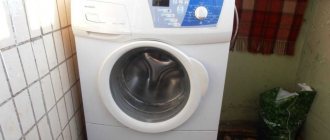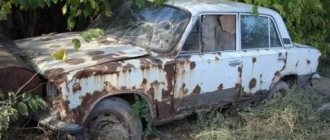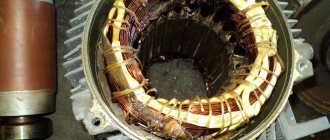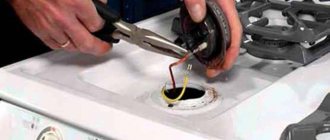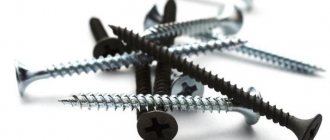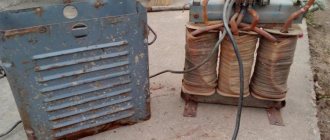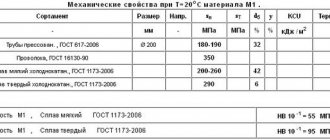According to the latest statistics, a high proportion of industrial use of recycled copper products is known, namely 34% of the total. This amounts to about 25 million tons of raw materials. Products containing copper are characterized by a long life span - 2-100 years. Consequently, the share of scrap metal is quite high, and today the cost of 1 kilogram of copper scrap varies between 250-330 rubles.
Where can you find copper?
It is copper that is used in the manufacture of entire devices, in particular parts or their components, relevant in the following areas:
- Electrical engineering, mechanical engineering - motor windings, sets of subassemblies (bearings), conductive cables, various parts.
- Instrumentation - small elements of power supplies.
- Construction – tiles, gas and water supply and other engineering systems.
- Production of household appliances - refrigeration equipment, televisions, etc.
- Manufacturing of medical supplies – medical containers, device handles, surfaces.
- Shipbuilding - copper plating of ship components makes it possible to withstand the aggressive effects of sea water.
In addition, after recycling, scrap metal is used in art in the manufacture of forged figures, as well as household items (kitchen paraphernalia).
In a decent amount, it is just right to detect scrap containing copper in:
- products used in plumbing (angles, sockets, couplings, etc.);
- gas burners;
- faulty electrical appliances (copper hoses of heat exchangers of hoods, air conditioners, printed circuit boards);
- industrial recyclables (shavings, copper dust, scrap metal in the remains of pipes).
In turn, the pure alloy is used in the form of solder, as well as consumable raw materials for welding and cutting work with other metals, for example, cast iron. In the soldering action, copper is used to coat raw materials that are difficult to solder. In turn, copper plating leads to increased corrosion resistance.
Groups of copper scrap
Copper scrap belongs to groups M1-M13. Part of the copper-containing waste and scrap belongs to group Cl1 - leaded cable and wires with copper conductors in polyethylene, polystyrene and rubber insulation.
The table shows the grades and quality indicators of copper scrap.
| Group | Characteristics of the group | Index | Norm |
| M1 | Copper current conductors: wires and busbars are clean, without coatings or insulation. Brands: M00, M001k, M0, M0k, M1, M1k | Tied in coils, in soft containers or in bags. Do not contain non-metallic impurities or other metals. No burnt brittle areas, shiny surface, no moisture or oil. | |
| Metal yield, %, not less | 98 | ||
| Copper content, %, not less | 99,9 | ||
| Wire diameter, mm, not less | 0,3 | ||
| Clogging, %, no more | 2 | ||
| Package weight, kg, no more | 250 | ||
| M2 | Copper current conductors: wire and busbars, freed from insulation by heat treatment. Scrap and lump waste from the electrolytic industry, not contaminated with other metals and alloys. Brands: M00, M001k, M0, M0k, M1, M1k | Tied in coils, in soft containers or in bags. Do not contain non-metallic impurities or other metals. No burnt brittle areas, oxidized surface allowed, no water or oil. The surface is free of tarnish and traces of oxidation. | |
| Metal yield, %, not less | 97 | ||
| Copper content, %, not less | 99,9 | ||
| Wire diameter, mm, not less | 0,5 | ||
| Clogging, %, no more | 3 | ||
| Package weight, kg, no more | 250 | ||
| M3 | Scrap and waste of pure copper without coating, half and soldering: defective cast, forged and stamped products, trimmings, cutting of sheets, tapes, pipes, gratings and wires without insulation, trolleys with iron attachments. Scrap and lump waste from the electrolytic industry, not contaminated with other metals and alloys. Brands: M00, M0, M1, M2, M3 | Tied in coils, soft containers or bags. Does not contain non-metallic impurities, other metals, brittle charred wire, no water and oil. Tarnished colors and traces of oxidation are allowed on the surface. Clean copper piping is acceptable. The presence of fragments of other metals in the form of attachments is allowed. Without water and oil. | |
| Metal yield, %, not less | 95 | ||
| Copper content, %, not less | 99,5 | ||
| Clogging, %, no more | 5 | ||
| including iron,%, no more | 0,5 | ||
| Wire diameter, mm, not less | 1,0 | ||
| Package weight, kg, no more | 250 | ||
| Weight of individual pieces, kg, no more | 100 | ||
| M4 | Scrap and waste mixed with half-and-half and soldering. Brands: M00, M0, M1, M2, M3 | Do not contain non-metallic impurities of other non-ferrous metals. The presence of fragments of other metals in the form of attachments is allowed. Without water and oil. | |
| Metal yield, %, not less | 94 | ||
| Copper content, %, not less | 99,5 | ||
| Clogging, %, no more | 6 | ||
| including iron,%, no more | 0,5 | ||
| M5 | Copper mixed scrap without burnt copper wire: varnished current conductors, semiconductors, parts of refrigeration units, coils | Galvanic cells are not permitted. Without water and oil. | |
| Metal yield, %, not less | 90 | ||
| Copper content, %, not less | 99,5 | ||
| Clogging, %, no more | 10 | ||
| including iron,%, no more | 0,5 | ||
| M6 | Scrap copper enameled, varnished wire in cotton insulation, fiberglass and paper insulation or silk insulation (two layers). Brands: M00, M0, M1 | Tied in coils, soft containers or bags. Does not contain non-metallic impurities or other metals. Without water and oil. | |
| Metal yield, %, not less | 93 | ||
| Copper content, %, not less | 99,9 | ||
| Clogging, %, no more | 7 | ||
| Wire diameter, mm, not less | 1,0 | ||
| Package weight, mm, no more | 250 | ||
| M7 | Copper chips from bare copper without insulation. Brands: M0, M1 | Does not contain non-metallic impurities or other metals. Without water and oil. | |
| Copper content, %, not less | 99,5 | ||
| Metal yield, %, not less | 98 | ||
| Clogging, %, no more | 2 | ||
| including iron,%, no more | 1 | ||
| Wire diameter, mm, not less | 0,5 | ||
| M8 | Pure copper shavings. Brands: M00, M0, M1, M2, M3 | Without the presence of other metals. | |
| Metal yield, %, not less | 98 | ||
| Copper content, %, not less | 99,5 | ||
| Clogging, %, no more, | 2 | ||
| including oil and water, %, no more | 1,5 | ||
| M9 | Scrap electric motors. Brands: M0, M1, M2, M3 | Delivery by agreement of the parties | — |
| M10 | Mixed low quality copper scrap | Delivery by agreement of the parties | — |
| M11 | Copper slag, dust, ash, furnace debris, litter, goats | Metal yield, %, not less | 10 |
| Copper content, %, not less | 8 | ||
| Weight of individual pieces, kg, no more | 500 | ||
| For lower copper content - delivery by agreement of the parties | |||
| M12 | Insulated copper wire scrap | Scrap made of copper wire with different types of insulation. | |
| Delivery by agreement of the parties | — | ||
| M13 | Copper clad with other non-ferrous metals | Delivery by agreement of the parties | — |
What influences pricing: factors
In addition to the brand of secondary raw materials, the following factors influence the price of a kilogram of copper scrap:
- Scrap collection company. Large factories that purchase/process raw materials give a higher price, but do not accept scrap less than 1 ton.
- Valuation on the stock exchange. Quotes change daily, so companies adapt to national/international price criteria for metal purchases.
- Like any product, the cost per kilogram of copper directly depends on fluctuations in exchange rates. A rising dollar provokes an increase in the cost of raw materials.
Those wishing to sell copper at a profit should study the price list at the collection point. Preference should be given to a reputable dealer, even if he is a little less expensive. Often, small dealers, in order to attract a client, set a high tariff, although in reality they reduce it during the transaction, citing the poor quality of the metal. Thus, on official services, data on the price of a kilogram of copper is updated daily.
The price for copper scrap is higher with non-cash payment
Cash payments for metal cause a lot of trouble for suppliers. It is easier to buy copper scrap by bank transfer.
Nowadays, many large and honest producers of copper scrap suggest that regular scrap dealers should have a special bank card. They transfer money to this card for purchased copper scrap. There are special applications for smartphones that allow you to immediately check the receipt of money.
Are there any benefits to buying scrap metal?
As in any business, the goal is to generate income, and the area of recyclable materials is no exception. Receiving copper scrap can be a profitable business that does not require special investments. The organization's model is reduced to the purchase of metal, starting from a kilogram of copper. So, private individuals are asking a little less than the price at which they will rent it to a processing factory. The difference, after deducting transportation costs, will be income.
Before starting an activity, you need to select a suitable site so that there are no identical metal receiving points nearby. It is worth choosing a processing plant in advance where you will subsequently deliver your scrap.
The price may be higher when there is a significant volume of metal, since wholesale prices apply from 1 ton. Meanwhile, when paying by bank transfer, it is possible to get a high price, winning 10-15 rubles. from every kilogram. Buyers often remove the metal themselves, which is convenient and also saves on transportation costs. Thus, to answer the question of interest: “How much will they give per kilogram of copper?” It will be possible only taking into account all the above factors.
I tell you the secret of making money on nickel and copper
Inflation in Russia and the World has hit every person's budget in the gut. The suffering of the Russian people results in the profits of alcohol companies. But then a good-natured person appears who will share with you an idea on how to make money from metal.
While I was writing a post about Norilsk Nickel yesterday, a hitherto unknown insight came into my bright, bald head, which I will now share with you, my dears.
First of all, I would like to draw your attention to the quotes of metals: nickel and copper. Nickel price today:
$22,395 per ton of nickel. For ease of calculation, I convert it into the price of rubles per kilogram, assuming 1 $ = 75 rubles:
- 22395*75/1000 = 1680 r/kg (rounded up a bit)
Now let’s turn our attention to the copper quote today:
$9991 per ton of copper. To simplify the calculations, I will also display the price of 1 kg of copper in rubles, assuming 1 $ = 75 rubles:
- 9991*75/1000 = 750 RUR/kg (rounded up a bit)
And now that we, with great grief, have found out the price in rubles for 1 kilogram of nickel and copper, we can get to the point.
Yesterday, after processing this idea, I shared it with a well-known conspiracy theorist. I don’t see the point in mentioning his name, since everyone knows him. In general, he did not approve, rejecting the idea at the stage “there must be some nuance that ruins the whole idea,” but he did not leave any counterarguments.
I suggest you take a look at the subject of our study:
In front of you is 1 ruble from the Bank of Russia. Stamped since 1997. Coin weight 3.25 g. Material: copper-nickel alloy.
By now you should already be able to guess what we're going to talk about.
Let's assume for a moment that this coin was stamped not from cupro-nickel alloy, but from copper. In 1 kg of ruble coins there should be, taking into account the weight of one 3.25 grams:
- 1000/3.25 = 308 pcs. (rounded up a bit)
It turns out that we can exchange 308 rubles for 308 pieces of ruble coins, with a total weight of 1 kg of “copper”.
Now we return to the price of copper, it is equal to 750 rubles/kg, and we just “exchanged” this kilogram for 308 rubles. Are you smart?
Now you need to pay attention that ruble coins are made not from pure copper, but from a copper-nickel alloy. And nickel will be more than 2 times more expensive than copper. However, as a rule, the amount of nickel in such an alloy does not exceed 20%. But I don’t know the exact amount of it in the alloy of ruble coins. Therefore, it is convenient to take the price of pure copper as a standard.
The nuances of making money
But of course, not all coins fit the above scheme. The fact is that although previously rubles were stamped from a copper-nickel alloy, now this alloy has been replaced by steel with nickel galvanization. Those. of no particular value.
How to determine the right metal
I present to you a table of stamping of Russian coins since 1997
I made a slight truncation of the table, since other years are not interesting.
Yellow arrows point to coins of interest to us. The only thing I’ll add is that coins marked in red cost much more than their metal and face value, but that’s not what the post is about.
How can we get the rubles we need out of circulation? We need a magnet that will select coins that we don’t like from a heap, or rather those that are magnetic because they are made of steel.
The picture shows: a magnetic ruble (left) and a non-magnetic one (right). Those. from 1997 to 2005 they were made of copper-nickel alloy, and from 2007 to today they were made of steel. in 2006, coins of both types were minted.
All that remains is to get (buy, exchange) money for coins and, using a magnet, weed out the ones you need, and put the rest back into circulation.
What other coins can you turn into money?
The same can be done with coins of 2 and 5 rubles, but their weight (5.1g and 6.45g, respectively) will not be a multiple of that of a ruble coin, so the exhaust will be less. And in the case of 5-ruble ones, without it at all. (155 coins per kilogram = 775 nominal rubles, with a copper price of 750 rubles/kg).
There are also kopeck coins. We may not be interested in 1 and 5 kopecks, since they have always been made of steel, but 10 and 50 kopecks will be very interesting. They were stamped from brass. Now let’s calculate the amount per 1 kg a little:
- 10 kopecks weigh 1.95 grams -> in 1 kg there will be 513 pieces (rounded up a little)
- 50 kopecks weigh 2.9 grams -> 1 kg will be 345 pieces (rounded up a little)
the price will be:
- 10-kopeck coins in 1 kg = 51.3 rubles
- 50-kopeck coins in 1 kg = 173 rubles
On the black market of any scrap metal acceptor, the price of brass varies depending on the amount of weight handed over at the same time and starts somewhere from 325 rubles and creeps up.
This all means that you can buy 1 ton of 10-kopeck coins for 51,300 rubles, and sell them as scrap brass for at least 325,000 rubles.
Why didn't I do this myself? Because I'm a lazy ass.
Units of specific gravity
Different units are used to express the specific gravity of copper in different measurement systems.
- In the GHS system, this parameter is measured in 1 dyne/cm3.
- The SI system uses a unit of measurement of 1 n/m3.
- The MKSS system uses a unit of measurement of 1 kg/m3.
If you are faced with different units of measurement for this parameter of copper or its alloys, then it is not difficult to convert them into each other. To do this, you can use a simple conversion formula, which looks like this: 0.1 dyne/cm3 = 1 n/m3 = 0.102 kg/m3.
Copper ore before processing
Copper market in Russia and its main players
The domestic history of copper mining dates back to the 17th century - it was at that time that the first copper smelting deposits were built on the territory of the then Russian Empire. However, they did not work even 10 years, and a real rise in the development of copper production occurred only in the 20th century.
In 2022, Russia extracted 1.145 million tons of copper from the ground and produced a little more than 1 million tons of refined copper (with production of the latter exceeding the million mark for the third year in a row).
There are three truly major players in the domestic market. These are the Ural Mining and Metallurgical and Russian Copper Company. There are also independent enterprises, but the volumes of copper they extract amount to thousands and amount to only a few percent of total Russian production.
Copper density value
The density of this metal, which can be viewed in a special table, has a value equal to 8.93 * 103 kg/m3. Also in the table you can see another characteristic of copper, no less important than density: its specific gravity, which is also 8.93, but measured in grams per cm3. As you can see, for copper the value of this parameter coincides with the density value, but do not think that this is typical for all metals.
The density of this, and any other metal, measured in kg/m3, directly affects the mass of products made from this material. But to determine the mass of a future product made of copper or its alloys, for example, brass, it is more convenient to use the value of their specific gravity rather than density.
What is copper "mix"?
This raw material consists of a mixture of copper products, uninsulated production residues, clogging and ferrous scrap. Most often it is supplied in the form of household scrap, or a mixture of raw materials from retail collection points. Traces of tinning, traces of soldering, a small percentage of insulation, construction waste, paintwork (varnishes, paints, chrome plating) are allowed. The total percentage of blockage should not be more than 3-5%. If raw materials are supplied of insufficient quality, the receiving point reserves the right to apply a clogging factor or refuse to accept the metal.
List of prohibited scrap
Reception points are equipped with special devices that allow not only to determine the quality of the scrap metal being handed over, but also to identify copper scrap that is prohibited for delivery . This is done to understand the degree of safety and the possibility of further processing.
Even a large batch of copper scrap will not be accepted if the products are on the list of prohibited items for delivery
So, the following types of copper products cannot be scrapped:
• hermetically sealed containers, empty or containing residues of any substances;
• property belonging to another person without a power of attorney;
• military equipment and ammunition;
• scrap with an increased level of radiation;
• property owned by public utilities;
• Any stolen items.
Who is responsible for accepting copper recyclables?
What is a reception point?
As noted above, obtaining copper through secondary processing is very effective. For this purpose, in almost every city or town there are special collection points for scrap metal , including copper, from where it is then supplied to processing plants.
Thanks to recycling, it becomes possible to produce new technology, parts or equipment without using natural materials.
The acceptance of copper scrap is usually carried out by so-called individual entrepreneurs or LLCs, specializing in the processing of recyclable materials. These can be small private firms, large companies, as well as various environmental organizations that have the necessary equipment, professional knowledge and experience in receiving, storing and transporting scrap. Scrap metal is also accepted by individual resellers, however, this method of disposal is not considered successful, since they usually do not have the appropriate license permitting this type of activity.
Only official points with a license have the right to receive, store and transport scrap metal
How to choose a collection point
The choice of collection point for the delivery of copper scrap metal should be approached responsibly. First of all, you need to study the metal receptacles that are located in the city. You can do this using the search engine on our website:
To view collection points in your city, use the “Select recyclables and city” button located on the right. You will be able to familiarize yourself with prices, addresses and telephone numbers, and based on this, choose the acceptance that suits you best. It should be noted that preference should be given to those reception points that are closest to your place of residence.
New life for copper scrap metal, or how high-quality metal is made from recycled materials
Recycling process
After the collection point, copper scrap is sent to special processing plants. There, scrap metal is separated from debris and non-metallic elements on a special vibrating conveyor. After this, the purified copper is sent for further processing.
Depending on how the recycled copper scrap will be used, different processing methods are used:
• cryogenic cooling with air or magnetic separation;
• roasting and melting;
• acid-salt method and a number of others.
Production of copper sulfate
Recycled copper is also used to produce copper sulfate. This substance is actively used in crop production and medicine. In order to obtain it, copper is first smelted, removing impurities, and then granulated and quickly cooled. In this case, gases are released, and the copper itself becomes porous. Next, the copper is dissolved in sulfuric acid while blowing with air and, finally, the resulting copper sulfate is dried and crystallized.
The resulting copper sulfate crystals are then used to kill garden pests.
Copper cathode production
To obtain cathode copper M00, scrap metal containing different amounts of metal is separately melted, bringing it to the state of blister copper. After which, the resulting copper is poured into anodes and electrolytic refining is performed. The result is high quality cathode copper.
